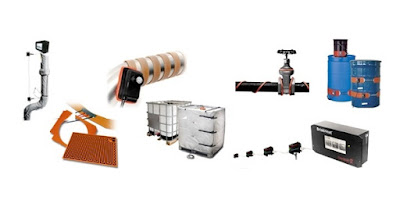Bioreactors and other batch operations can require the integration and coordinated operation of multiple control loops, data collection and processing, and the equipment and instruments sourced from differing manufacturers. Operations such as these can benefit greatly from productivity improvement afforded by expert level software that automates and coordinates the tasks involved in batch processing.
ILS Automation, a leader and specialist in software and hardware targeted at the automation of batch processing, provides their Batch Expert+ software which allows operators to maximize productivity throughout the entire process. The company takes an open non-proprietary approach to providing solutions for complex batch processing. In the company's own words (from the
ILS website) Batch Expert+ software offers:
- Adaptable: Customers can customize a system to meet their needs both now and in the future. Software features are often added to meet the ever-changing needs of process development or the introduction and integration of new measurement technology.
- IoT Approach: We apply the notion of the Internet of Things (IoT) to laboratory automation. Our controllers integrate smart control elements and instruments in smart ways. Often this implies a digital interface to read and write actual numbers instead of an analog 4-20 mA approximation. Richer and more accurate/precise data is presented for data analysis and automation. Be it gas flow controllers (Alicat and Brooks), digital probes (Mettler ISM, Hamilton Visiferm), scales (Mettler, Sartorius, OHAUS, etc.), cell density (Hamilton Incyte, ABER, Fogale), the IoT approach provides smarter solutions.
- Open: ILS first-and-foremost provides solutions — not just a piece of equipment that is unpacked from a box. To achieve this goal, we don’t hide behind proprietary equipment or software that is rigid and would conform to our thoughts of what our customers need. Our platforms grow and scale to adapt to customer needs through an open software and hardware system based on industrial grade, off-the-shelf components.
- Remote Support: ILS often supports our customers through a remote VPN connection (LogMeIn, Citrix Receiver, etc.). Our customers claim that we have an obsession with bioreactor control and performance tuning. Combining our AFC controller with our BE+ platform, the slightest DO oscillation or anomaly spurs our interest. Through this interaction and customer feedback, we continually learn and improve our products and solutions. Also, we are often not on-site when questions and issues arise just before a 5:00 pm Friday inoculation, so any automation to help the end users is greatly appreciated.
There is more to learn about Batch Expert+ and how it can be incorporated into your own operations. Share your processing challenges with a
product specialist, combining your process knowledge with their product application expertise to develop an effective solution.



